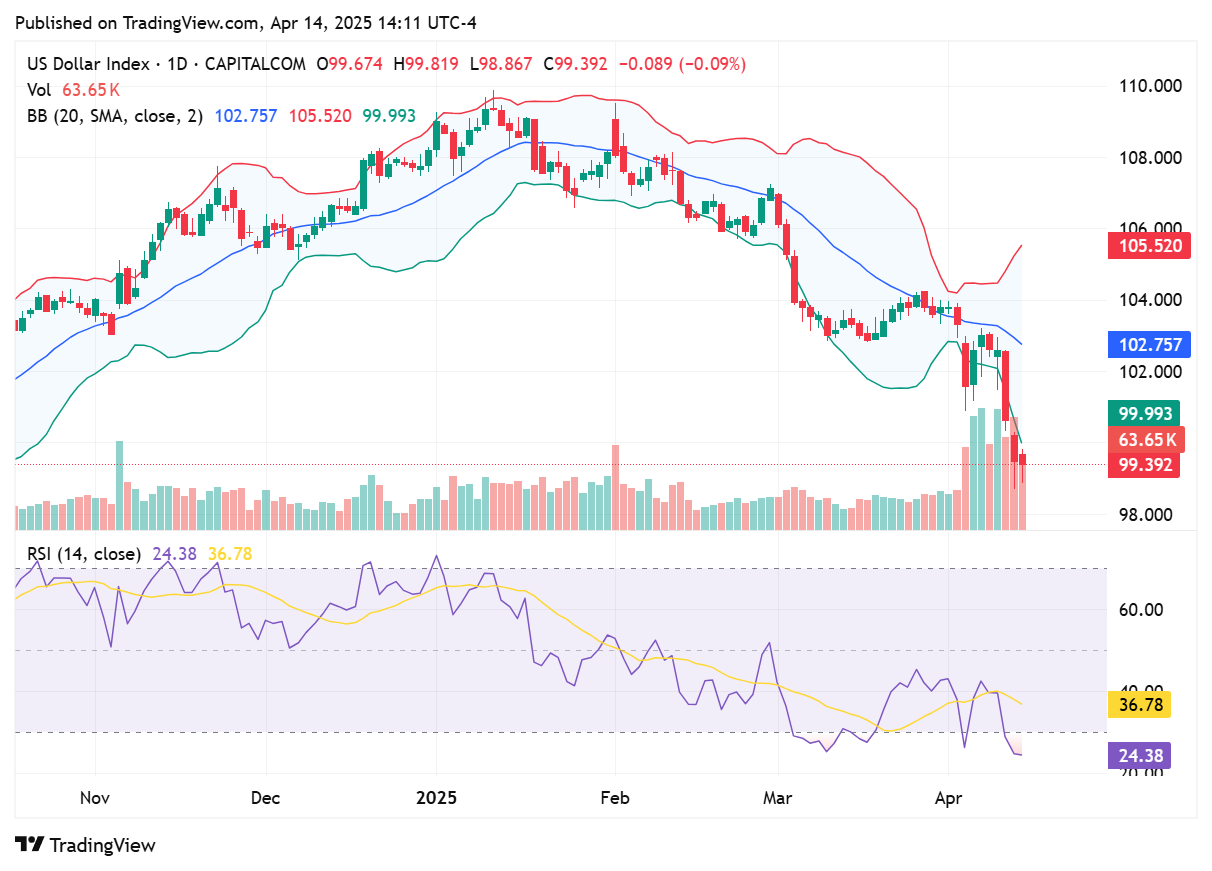Value of the U.S. Dollar
The U.S. dollar has weakened significantly in recent weeks, reaching multi-year lows due to escalating trade tensions, economic uncertainty, and shifting global sentiment.
The Dollar Index (DXY) fell to 99.4 today, marking its lowest level in three years. This represents a 4% decline since the beginning of April.
Last week alone, the dollar dropped 3%, reflecting heightened concerns over U.S. economic policies and growth outlook.
Although a 90-day pause on punitive tariffs was announced on April 9, uncertainty remains regarding future tariff policies.
Investors are moving away from U.S.-denominated assets amid concerns over inflation and recession risks. This has led to significant dollar depreciation against major currencies like the euro and yen.
A weaker dollar makes U.S. exports more competitive globally but raises the cost of imports, potentially fueling inflation.
The decline undermines the dollar's dominance as a global reserve currency, with analysts predicting a shift toward a multicurrency world over the next decade.
Benefits of a Weak U.S. Dollar
A weaker U.S. dollar can have several positive effects on the economy, particularly for exporters, producers, and investors. Here are the key benefits:
Boosts U.S. Exports
A weak dollar makes U.S. goods and services more affordable for foreign buyers, increasing demand for American exports.
Exporters can raise prices in dollar terms without losing competitiveness internationally, leading to higher profits.
Sectors like agriculture and manufacturing benefit significantly, as domestically produced goods become more competitive against imports.
Enhances Multinational Companies' Profits
U.S. multinationals with substantial overseas operations benefit from currency exchange gains. When foreign earnings are converted into dollars, they yield higher returns due to the weaker currency.
Companies such as McDonald's and Procter & Gamble have historically seen increased shareholder returns during periods of dollar weakness.
Encourages Domestic Production
A weaker dollar increases the cost of imported goods, making locally manufactured products more attractive to domestic consumers.
This incentivizes companies to keep production within the U.S., supporting job creation and boosting the domestic economy.
Attracts Foreign Investment
Foreign companies may find U.S. assets cheaper to acquire when the dollar is weak, leading to increased investment in American businesses.
Benefits Investors
Investors in commodities, international equities, and companies with significant foreign revenue can see higher returns during periods of dollar depreciation.
Emerging markets and international ETFs often perform well as a weak dollar boosts their relative competitiveness.
Challenges of a Weak U.S. Dollar
A declining U.S. dollar presents several economic and geopolitical challenges, both domestically and internationally. Below are the key issues:
Upgrade to a paid subscription to unlock access to detailed entry and exit points for our trades, real-time trade updates, and expert insights into macroeconomics and finance. Subscribers will also gain exclusive access to advanced options trading strategies and the methodologies behind structuring these trades.



